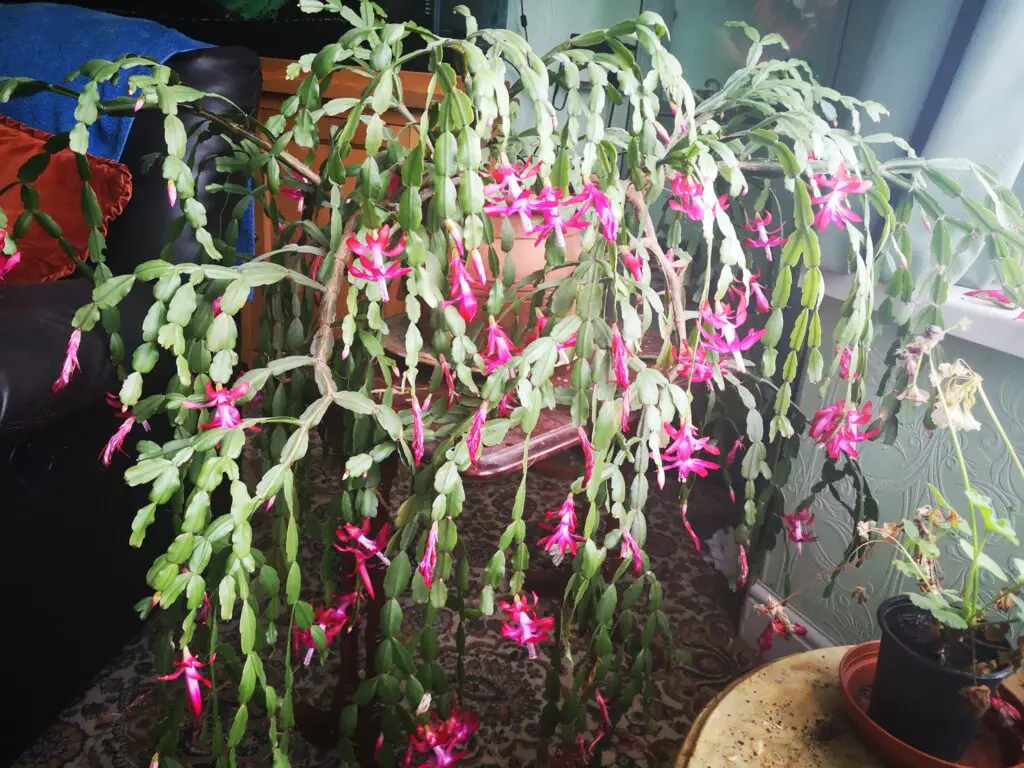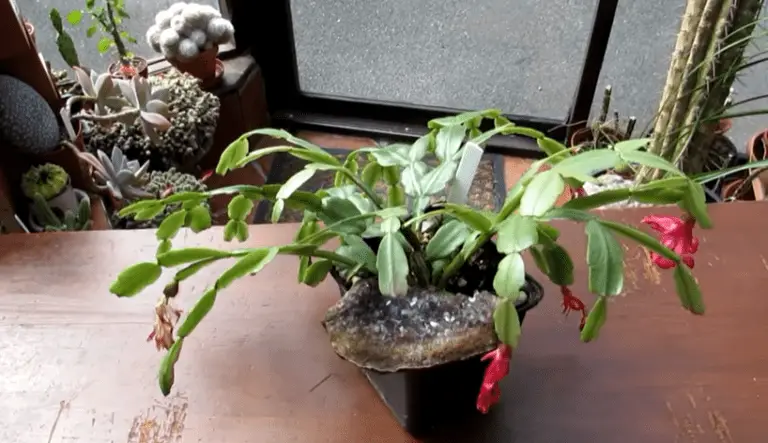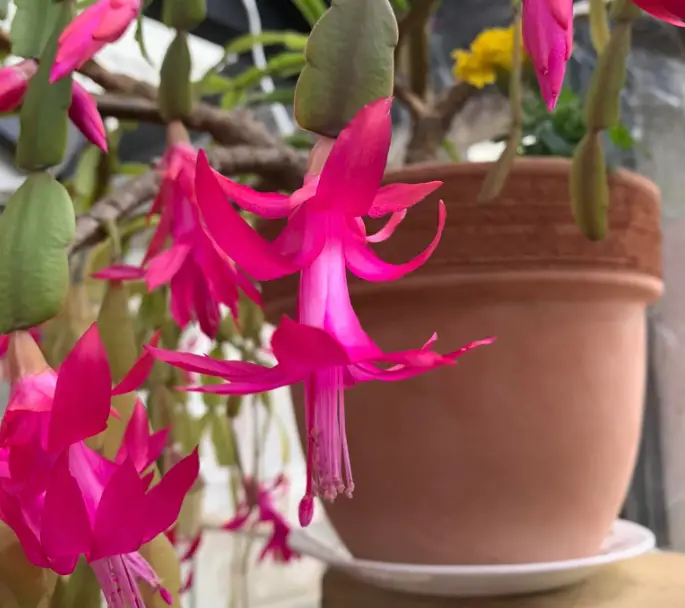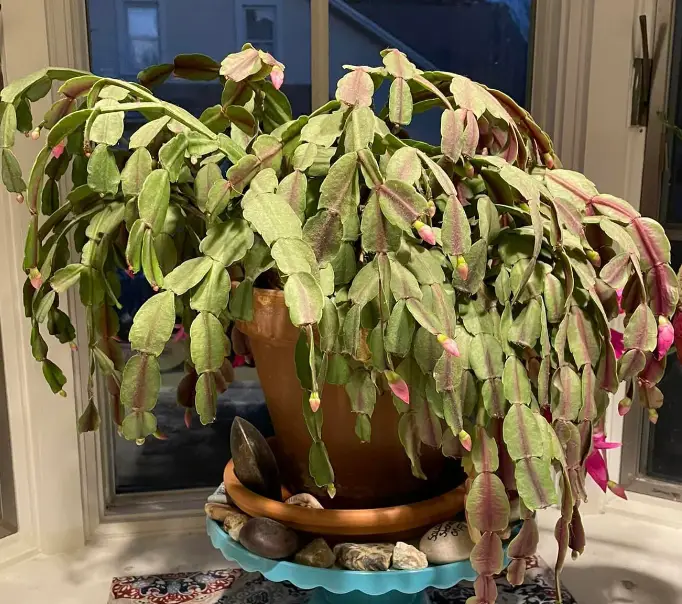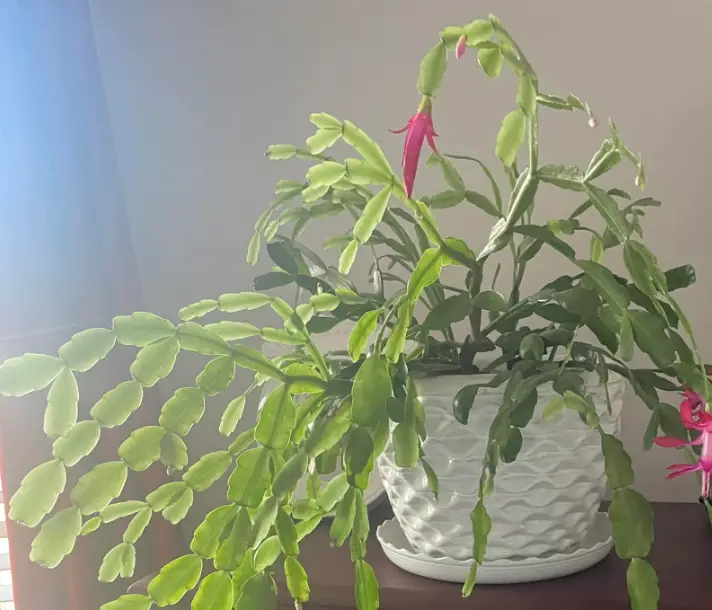Summer Care for Christmas Cactus: A Complete Guide for Beginner
The Christmas cactus (Schlumbergera spp.) is a beloved houseplant. This forest cactus is cherished for its vibrant blooms that typically brighten homes during the winter holidays. This is typically when almost all other plants are dormant.
To ensure that you continue to enjoy those stunning flowers, your Christmas cactus requires proper care during the summer months. It’s the only way to keep your plant healthy and ready to dazzle come winter.
Although considered a growing season, summer presents unique challenges for this tropical cactus. This includes higher temperatures, intense sunlight, and changing humidity levels.
In this comprehensive guide, I’ll explain how to care for your Christmas cactus in summer. This covers light requirements, watering, fertilization, temperature, humidity, and other important needs.
Summer Care for Christmas Cactus
Unlike desert cacti, Christmas cacti are native to the tropical rainforests of Brazil. They naturally grow as epiphytes on trees. This unique origin means they prefer indirect light, consistent moisture, and higher humidity.
These conditions can be tricky to replicate in American homes during summer. Proper summer care ensures your Christmas cactus remains vigorous, avoids stress, and sets the stage for prolific blooming in late fall or winter. Let’s dive into the specifics of summer care.
Light Requirements for Christmas Cactus in Summer
Christmas cacti thrive in bright, indirect light. In summer, when sunlight is more intense, it’s important to protect your plant from direct rays. Intensive sunlight can scorch its delicate, leaf-like segments.
Here’s how to manage light for your Christmas cactus:
- Indoors, place your Christmas cactus near an east-facing window where it receives gentle morning light. If you only have south- or west-facing windows, use sheer curtains to diffuse the light. Position the plant a few feet away from the window.
- You can move your Christmas cactus outside during summer to benefit from natural light and fresh air. Choose a shaded spot, such as under a tree, on a covered porch. Avoid areas with direct afternoon sun, especially in hotter regions like the Southwest or Southeast.
Signs of improper light
- Yellowing or reddish leaves on a Christmas cactus, wilting, or developing scorched spots indicate excessive sun exposure. Move the plant to a shadier location immediately.
- Leggy growth or pale segments suggest insufficient light. Gradually increase exposure to brighter, indirect light.
Watering Your Christmas Cactus in Summer
Christmas cacti require more frequent watering in summer due to higher temperatures and increased evaporation. However, overwatering is a common mistake that can lead to root rot. Follow these guidelines:
- Water when the top 1 inch of soil feels dry to the touch. This typically translates to watering every 7–10 days, depending on your climate and indoor conditions.
- If your Christmas cactus is outside, it may need watering every 5–7 days, especially in dry or windy areas like California or the Midwest.
- Ensure your plant is in a well-draining potting mix, such as a blend of peat moss, perlite, and orchid bark. Use a pot with drainage holes to prevent water from pooling.
How to Water
- Water thoroughly until excess water drains from the bottom, then empty the saucer to avoid soggy roots.
- Use room-temperature water to avoid shocking the plant. Rainwater or distilled water is ideal. Christmas cacti can be sensitive to chemicals in tap water, especially in areas with hard water.
Signs of Watering Issues
- Soft, mushy segments or a foul odor from the soil indicate root rot. Reduce watering and repot if necessary.
- Wrinkled or shriveled segments suggest dehydration. Increase watering frequency gradually.
Regional Tip: In humid areas like Florida or Louisiana, reduce watering slightly to account for higher ambient moisture. On the other hand, in arid regions like Nevada, misting the plant occasionally can help maintain hydration.
Fertilizing Your Christmas Cactus in Summer
Summer is a growth period for Christmas cacti. It is the perfect time to provide nutrients to support healthy foliage and prepare for future blooms. Fertilizing correctly ensures your plant has the energy to thrive.
Fertilizer type
- Use a balanced, water-soluble fertilizer, such as 20-20-20 or 10-10-10, diluted to half strength.
- Alternatively, opt for a fertilizer formulated for succulents or orchids, which provides the right nutrient balance for epiphytic cacti.
Fertilizing schedule
- Feed your Christmas cactus every 2–4 weeks from June to August.
- Stop fertilizing in late summer (around mid-August) to allow the plant to transition into its pre-blooming phase.
Application tips
- Apply fertilizer to moist soil to prevent root burn.
- Flush the soil with plain water every few weeks to prevent salt buildup.
Warning: Avoid over-fertilizing, as this can cause leaf burn or excessive, weak growth. If you notice yellowing segments or a white crust on the soil, reduce fertilizer use and flush the soil.
Temperature and Humidity Needs
Christmas cacti prefer moderate temperatures. This can be challenging to maintain during summer, especially in regions with extreme heat. Here is what to do:
- Keep your plant in temperatures between 65°F and 80°F (18°C–27°C).
- Protect your cactus from temperatures above 90°F (32°C) or sudden drops below 60°F (15°C).
- If your plant is outside, bring it indoors during heatwaves (common in states like Texas or Arizona) or chilly summer nights (possible in northern states like Michigan or Maine).
Humidity Requirements
As tropical plants, Christmas cacti thrive in moderate to high humidity (50–60%). Summer air conditioning or dry climates can lower indoor humidity. Drooping segments may indicate excessive heat or low humidity
To stop your plant from getting stressed, here’s what to do:
- Place a humidity tray filled with pebbles and water beneath the pot. Ensure the pot doesn’t sit in water. Alternatively, use a room humidifier.
- Lightly mist the plant once or twice a week, especially in dry regions like Colorado or New Mexico. Avoid over-misting, as this can promote fungal issues.
- In humid coastal areas like the Pacific Northwest or the Southeast, natural humidity is often sufficient.
Additional Summer Care Tips
Here are a few more summer care tips for your Christmas cactus.
Pruning and maintenance
If your Christmas cactus becomes leggy, prune it in early summer (June) to encourage bushier growth. Use clean, sharp scissors to remove 1–2 segments from the tips of stems. You can propagate these cuttings in moist soil.
You should also consider dusting the segments gently with a soft cloth. This helps to improve photosynthesis and keep the plant looking vibrant.
Pest control
Summer can bring pests like spider mites, mealybugs, or aphids, especially for outdoor plants. Inspect your plant weekly for webbing, sticky residue, or small insects. Wipe pests with a cotton swab dipped in rubbing alcohol.
You can also treat with neem oil or insecticidal soap. Always remember to quarantine affected plants to prevent pests from spreading.
Repotting
If your Christmas cactus is root-bound, early summer is a good time to repot. Choose a pot 1–2 inches larger in diameter and refresh the soil with a well-draining mix. Repotting every 2–3 years is usually sufficient.
Preparing for Fall Blooming
To encourage winter blooms, start adjusting care in late summer. Gradually reduce watering and stop fertilizing by mid-August. In September, provide cooler nights (50–60°F) and 12–14 hours of darkness daily to trigger bud formation.
Common Summer Mistakes to Avoid
- Exposing your cactus to direct sunlight. Always provide filtered light to prevent sunburn.
- Overwatering your plants. Check soil moisture before watering to avoid root rot.
- Ignoring humidity. Low humidity can stress the plant, especially indoors.
- Neglecting pests. Early detection is key to preventing infestations.
- Using poor soil. Always use a well-draining mix to support healthy roots.
Conclusion
Caring for a Christmas cactus in summer requires attention to light, watering, fertilization, temperature, and humidity. By providing bright, indirect light, consistent moisture, regular feeding, and a comfortable environment, you’ll ensure your plant remains healthy and ready to bloom in winter.
Tim M Dave is a gardening expert with a passion for houseplants, particularly cacti and succulents. With a degree in plant biology from the University of California, Berkeley, he has vast experience in gardening. Over the years, he has cultivated a vast collection of desert plants and learned a great deal about how to grow and care for these unique companions.
